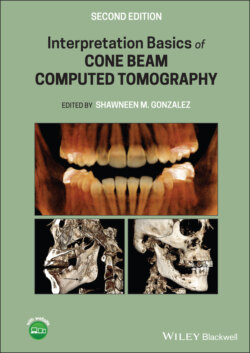Читать книгу Interpretation Basics of Cone Beam Computed Tomography - Группа авторов - Страница 25
Orthodontics
ОглавлениеThe AAOMR published a paper in 2013 with recommendations regarding CBCT use in orthodontics. There are four main guidelines given.
1 = Image appropriately according to the patient’s clinical condition.
Imaging should be based on a patient’s history, clinical examination, and presence of clinical findings where CBCT benefits outweigh risks. Avoid using a CBCT only for lateral cephalometric and panoramic views or when information can be obtained with nonionizing methods such as virtual models. When using CBCT, a FOV that captures only the region of interest should be used.
2 = Assess the radiation dose risk.
Consider the relative radiation level when assessing imaging risk over the course of orthodontic treatment. Explain risks and benefits to patients prior to imaging and document in patients records.
3 = Minimize patient radiation exposure.
Take a CBCT with proper settings, a FOV that matches the region of interest, adult versus child setting, and appropriate voxel size. Use shielding when possible, but make sure that it is not captured in the FOV (Figure 2.10). If you have a CBCT unit in office, ensure the machine is continually calibrated.
Figure 2.10. (a) Axial (A), coronal (C), and sagittal (S) views showing a thyroid collar captured in the FOV. (b) 3D reconstruction showing a thyroid collar captured in the FOV.
4 = Maintain professional competency in performing and interpreting CBCT studies.
Practitioners should continually attend continuing education (CE) courses, staying informed of the latest CBCT information. Practitioners have a legal responsibility to comply with local laws regarding CBCT use and interpretation. Patients should be informed of CBCT limitations (not a soft‐tissue imaging modality, artifacts, etc.).
